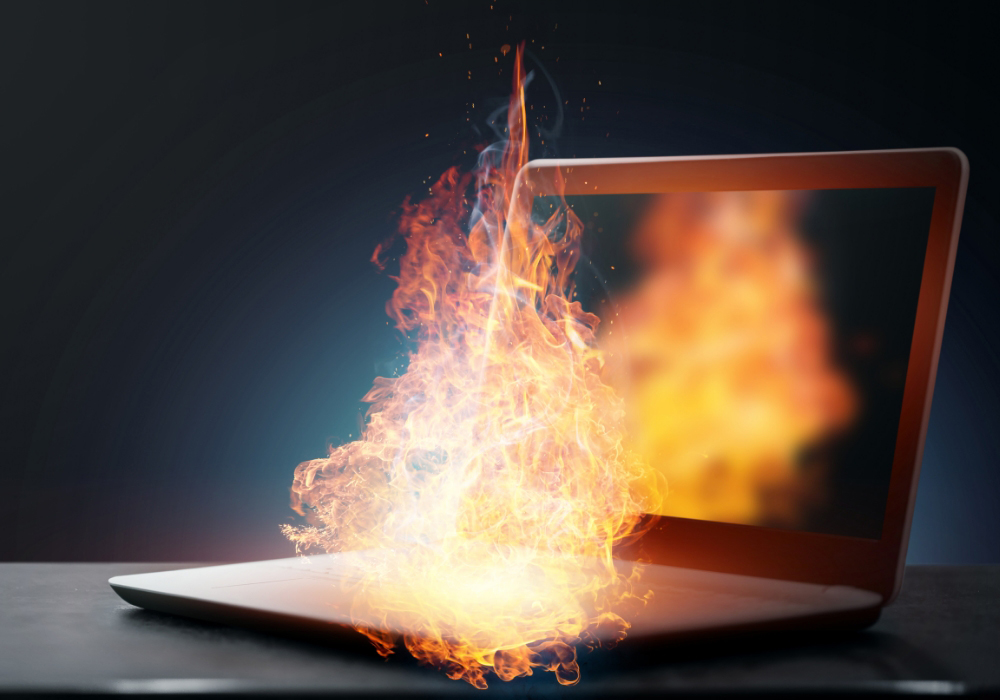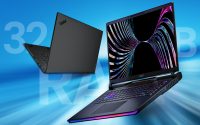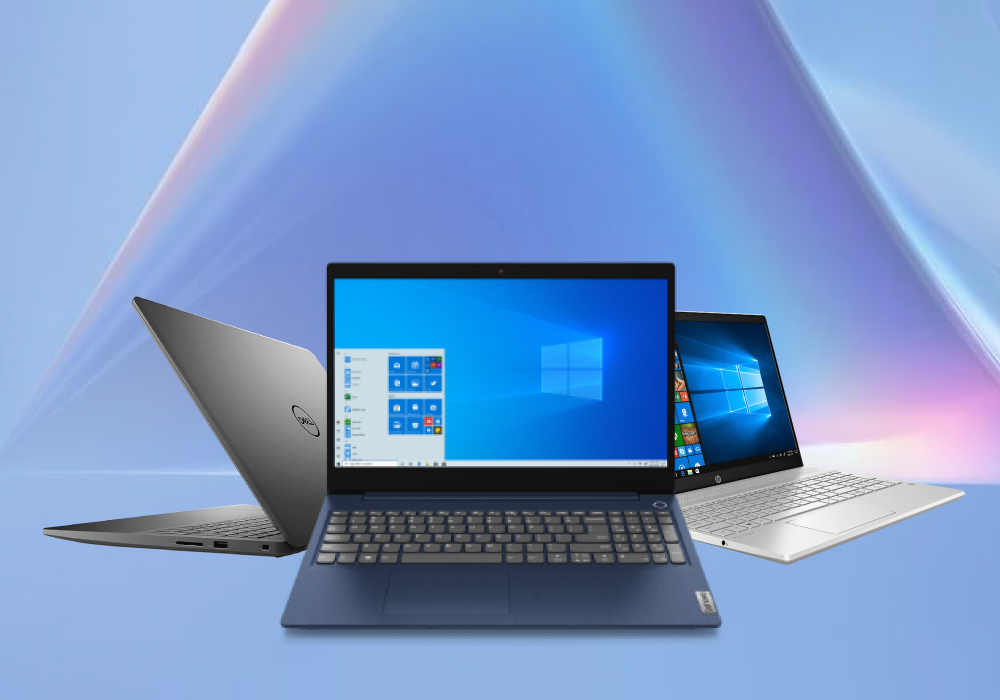How to install Windows 10 on a laptop that doesn’t support it?
Do you want to upgrade your laptop to Windows 10? Undoubtedly, installing Windows 10 on your Windows 7 or 8 laptop is indeed the best decision to keep up with the latest features and functionalities, but unlike previous versions of Windows, Windows 10 is a bit pretentious.
Every Windows laptop comes with a specific system requirement recommended by Microsoft that must be met for a smooth installation process and optimal performance. In this guide, we will provide you with the important insights you need to upgrade to Windows 10 on a laptop that doesn’t natively support it. Before that, let’s discuss the compatibility requirements and the potential solutions for overcoming compatibility issues.
What does this notification mean “Your device has reached the end of service”?
You may get a notification on your laptop that indicates your system needs a Windows update. Wondering what you should do when you get the notification “Your device has reached the end of service”?
You’ve received this notification because you’re trying to upgrade your system to Windows 10, which is no longer supported. Windows has been attempting to update your device with the new features, but it has not received any updates in a long time. This could be due to your device not being capable of meeting Windows 10’s minimum hardware and software requirements.
Regular updates are essential for keeping your device secure and protecting your data from viruses, spyware, and other malware.
Check Compatibility before Upgrading from Windows 7 or 8 to Windows 10.
Microsoft has officially announced some minimum requirements for Windows 10 on its website so that you can check before upgrading to the new version. These are the compatibility requirements:
Hardware Compatibility:
CPU: 1 gigahertz (GHz) or faster processor or System on a Chip (SoC)
Hard drive space: 16 GB for 32-bit OS; 32 GB for 64-bit OS
RAM: 1 GB for 32-bit, 2 GB for 64-bit
Graphics card: DirectX 9 or later with WDDM 1.0 driver
Display Size: 800×600
However, these are the minimum system requirements to install Windows 10, and we recommend you exceed these specifications for exceptional performance without any lags.
Software Compatibility:
Despite the hardware requirements, you should also check the software and drivers’ compatibility. This is of utmost importance because if your system’s drivers are not updated or have any software glitches, the installation process will not start or terminate in the middle.
Since the release of Windows 10, many software companies have already rolled out their software for Windows. However, if you have not updated the software, just update it. For the apps and software, you are using on a daily basis, search their developers’ websites and install their current version of Windows 10.
What if my laptop doesn’t meet these requirements?
If your laptop is unable to meet the minimum requirements, you cannot install Windows 10 on it until you consider a hardware update. You can consider the following hardware upgrades:
Driver Upgrades: It is necessary to confirm that your system has the latest versions of drivers. No matter whether you are using a Lenovo, Dell, ASUS, or HP laptop, go to the brand’s official website, search for your computer model, and download the latest updated drivers available.
Download them on a CD or USB thumb drive. The most important drivers you need to install include Chipset, Network, and Video Drivers. Even though the vendor only provides Windows 10 drivers, they should operate with Windows 11. Also, some Windows 7 drivers may be compatible.
Update the CPU: Check your laptop’s processor and match it with the minimum CPU requirements mentioned above; if it doesn’t match, consider updating your CPU to ensure your laptop runs flawlessly without any issues.
Increase the RAM: The minimum RAM requirement is 1 GB for a 32-bit system and 2 GB for a 64-bit system. However, if your laptop falls beyond this, you need to increase the RAM. Research the compatible RAM options for your laptop’s brand and model.
Storage Upgrade: Get a large hard drive to build a suitable environment for your PC to run Windows 10 without any compatibility concerns. We suggest you upgrade your typical hard disc drive (HDD) to a solid-state drive (SSD) to boost responsiveness and performance.
Buy a New Graphics Card: If your laptop comes equipped with integrated Graphics cards or has an old, dedicated Graphics card version, it is recommended to update it with the latest Graphics cards such as Nvidia GeForce and AMD Ryzen, etc.
Upgrade the Network Card: A network card, or LAN adapter, is a part of computer hardware that is designed to connect a laptop with another laptop. If your laptop’s built-in network card is incompatible with the Windows 10 operating system, you must consider upgrading to a compatible one for hassle-free connectivity.
Get a New Battery with Extended Life: The battery life of some laptops is so poor that they cannot even survive 1 hour of usage. All you have to do is replace your battery with the original brand’s battery to enhance compatibility.
Windows 10 Setup Still Failing? Follow these 6 Steps!
Disable Antivirus, incompatible apps, and startup programmes
If you are updating from Windows 7 or 8, or a previous Windows 10 version, security utilities might be a typical hurdle. We strongly recommend you disable the antivirus, Firewall, and anti-spyware applications and install the new security utilities compatible with Windows 10.
Background programmes and incompatible apps can also block the installation process. Configure your Windows, cross-check, and clean boot these applications before starting the installation.
Check the Device Manager using the following steps to detect incompatible apps:
- Open the Start Menu and search for “Device Manager”.
- Go to the Device Manager Settings.
- Find the devices marked with a yellow exclamation mark.
- If you detect any incompatible programmes, right-click on the start menu.
- Choose Control Panel and select the programme.
- Go to “Programmes and Features”.
- Choose “Uninstall a programme.”
- Choose the app to be uninstalled.
- Click on “Uninstall”.
Now check if you’re capable of installing Windows 10 after deleting all the unnecessary apps and programmes.
Fix the Driver Problems
Driver issues might be a potential cause of a failed Windows 10 installation. You can fix these issues by taking into account the following steps:
- Check that your PC has enough free space. A 32-bit operating system requires at least 16 GB of free space, while a 64-bit OS demands 20 GB.
- Run Windows Update to download and install any updates that are available. This comprises both software and hardware, as well as third-party drivers.
- Go to your laptop’s brand website, check for any third-party drivers, and install them if available. Disconnect any extra hardware attached to your laptop. This includes external storage devices, drives, docks, and any other peripherals that are not required for the basic operation of your system.
How do I repair the hard drive errors?
- Click on the “Start” menu.
- Open the Command Prompt by simply typing “cmd” in the search box.
- Click on the Command Prompt in the results.
- Enter chkdsk /f C: in the command prompt window. This command will begin detecting and repairing any issues with the hard drive.
- Depending on the size of your hard disc and the number of errors detected, this may take some time.
- Restart your computer after the completion of the repair process.
It’s also worth noting that driver compatibility may be a factor in this problem, as Windows 10 may lack updated drivers for some hardware.
Make sure you have enough Disc space available
As mentioned above, Windows 10 demands 16 GB for a 32-bit OS and 32 GB for a 64-bit OS. If your system’s hard disc is accumulated with multiple files and programmes, they can prevent Windows from installing.
You can free up disc space by doing the following:
- Transfer older and heavier files, such as documents, music, pictures, and videos, to an external hard disc.
- Clean out the obsolete programmes that you no longer use.
If you are getting an error notice stating that “Your System Reserved Partition is too small”, you can do the following:
- Open the Run dialogue box by pressing the Windows key + R at the same time.
- Type “diskmgmt.msc” in the command prompt and click on Enter.
- Find and select the system drive in the Disc Management window to see its size.
- Make sure the system-reserved partition is between 300 and 450 MB in size. If it is smaller, it must be resized to match the minimum specification requirement.
Check out the available updates
For seamless performance, you need to make sure all the latest system updates and drivers are installed on your laptop. This helps fix the issues your system is experiencing.
- Click on the Start button.
- In the search tab, type “Windows Updates”.
- Choose “Windows Update Settings” from the search results.
- The Windows Update Settings window will appear. Click on “Check for Updates”.
- Install the available Windows updates.
Run the DISM tool
If you are still unable to install Windows 10, run the DISM tool. The Deployment Service Image Servicing and Management tool is used to fix Windows corruption errors during the installation process.
Here is how you can run the DISM command:
- Open the Start Menu.
- Type CMD in the search box to open it.
- Right-click on the Command Prompt in the search results.
- Enter: Dism /Online /Cleanup-Image /ScanHealth
- Enter: Dism /Online /Cleanup-Image /RestoreHealth
Once the repair procedure is completed, restart your laptop and begin the installation process again.
How do I install Windows 11 on Unsupported Hardware?
If you’re intending to upgrade your laptop to Windows 11, but your system has incompatible hardware as recommended by Microsoft, you can use an ISO file and create a bootable USB with no requirement check to do a clean installation easily . Additionally, to install Windows 11, you can also make changes to the Registry that are permanent, however in this way, your device will be unable to back up.
Wrapping Up!
Windows 10 comes with various benefits, such as better defence and security mechanisms, improved performance, and faster boot times. By following the compatibility requirements and troubleshooting measures outlined in this article, you can ensure a successful Windows 10 upgrade.
However, always remember to back up your important data and use careful consideration and technical knowledge to install Windows 10 on an incompatible laptop. After following all the steps mentioned in the guide, if you are still experiencing errors during the installation process, it may be worth considering a new laptop.
The best laptops come with improved hardware capabilities, better compatibility with the latest software and drivers, and enhanced performance features. Explore a wide range of laptops and notebooks from all the renowned brands such as ASUS, Dell, HP, and Lenovo available at Laptop Outlet. Whether you desire ultraportable designs, powerful hardware, long-lasting batteries, or efficient cooling systems, our laptops provide the perfect solution for your every need.
So, why wait any longer? Visit Laptop Outlet and get your hands on your favourite device!



